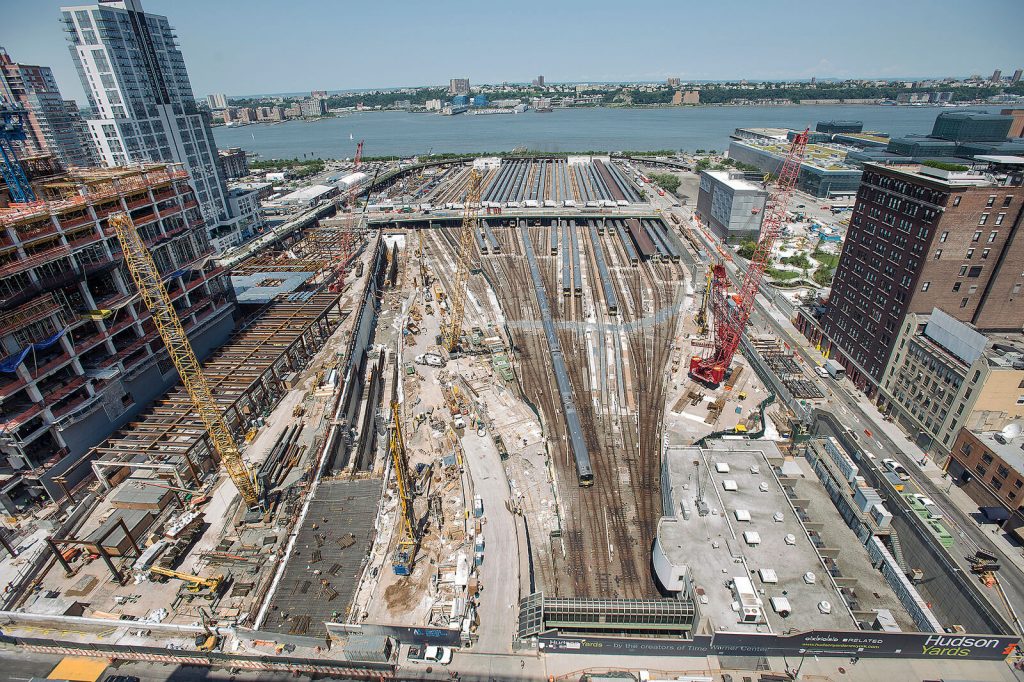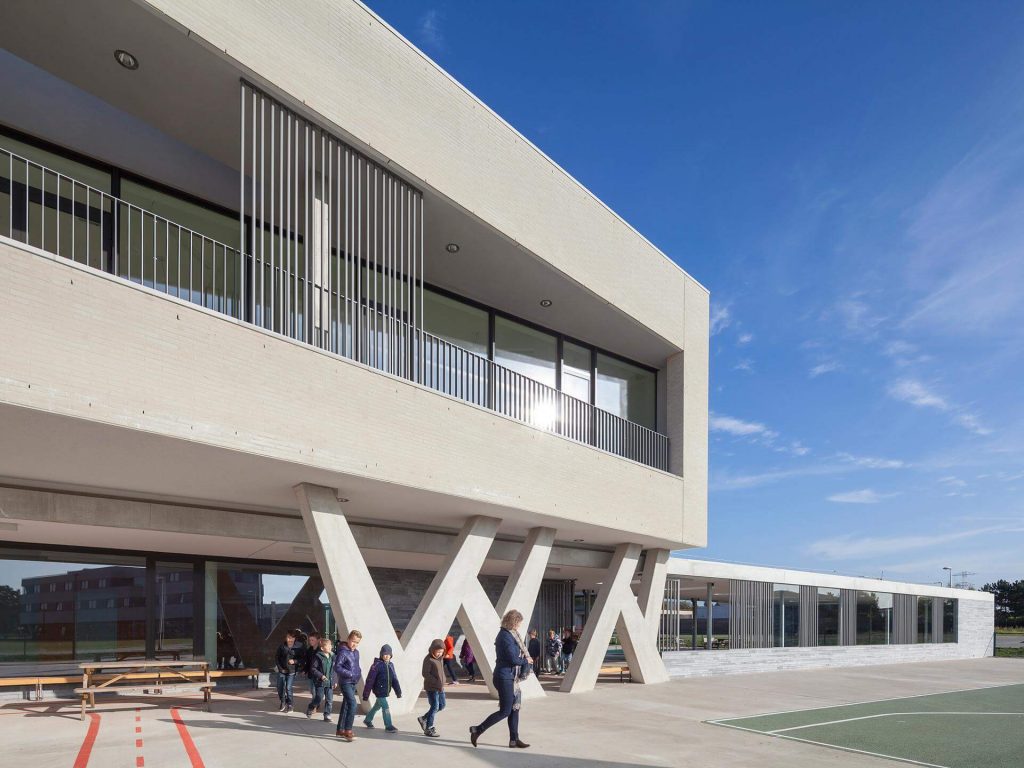Standardisation before using technology
‘There is one thing that construction companies absolutely need to do. They have to start standardising even before using technology. Otherwise, they just throw whatever technology they have out the window!’
Thomas Goubau, Aproplan CEO and founder, opened his speech at European ConTech Summit 2018 with this powerful remark. The Summit was held in London (January 30th) and was co-hosted by LetsBuild and Construction News.
During his presentation, Thomas Goubau highlighted the fact that many talk about digitization but construction companies should also start thinking about standardisation. Even before they decide to apply digital solutions.
In that way, it would be possible for construction to come one step closer to materializing the vision of replacing pen and paper. Especially today that productivity goes down and process regulations become more and more demanding.
‘Productivity is going down, while regulations are actually increasing. And it’s not only about government regulations. One thing that many people forget is ISO requirements. They hurt construction companies much more than they used to do’, says Thomas Goubau.
And he adds:
‘Five years ago you had two or three of these ISO requirements, while now there are six, seven, or even ten of them. And they are requirements that they need to be taken into consideration. It’s a lot of admin work that comes with them.’
An insight into the construction industry
At the moment, the building industry is battling against excessive budget overruns and project delays. As reported by McKinsey & Company, large-scale construction projects take 20% longer to be completed than planned and they exceed the agreed budget by 80%.
In order to find some effective solutions against these critical issues, it is indispensable to have a better understanding of what the global building sector looks like.

According to Thomas Goubau, the key characteristics of the industry could be summarised to the following:
Fragmented sector
Fragmentation is a serious problem for construction. It hinders productivity and the integration of project knowledge among designers and contractors. There are two main areas where fragmentation emerges normally:
- Construction work process: The separation can be found in the design and construction phase.
- Construction structure: Adversarial culture and absence of client focus are some representative examples in this case.
The lack of good communication and collaboration across the supply chain can lead to costly delays, harmful project disputes and low efficiency rates (30% at the moment).
A lot of small players
The lack of a big player that operates on a global scale is one of the industry’s main characteristics. At this point, it seems that smaller players are the main pillars of the construction sector. For that reason, the creation of a data ecosystem, as BIM expert Matthew Jackson suggested, might be an excellent option for the building industry.
Work on-site
Thomas Goubau mentions that 80% of construction work is taking place on site. This is a remarkably high percentage and it can sometimes be the reason behind project delays and budget overruns. Modular construction could help the industry boost efficiency and accelerate some of the processes on site.
Immature project definitions
The team on site plays a decisive role on the final outcome of a building project. If you have a good project manager, the team arrives well-prepared on site, with many checklists and know what they have to do in order to successfully complete their tasks. But, you have a bad manager and everything turns into chaos. This is where standardisation can help and protect your project from painful mistakes and costly delays.
What construction needs
By now, it’s evident that construction operates in a very complex client environment. Lately the project phase in which digital tools are becoming part of the building process has started to change.
‘We are usually used in the end of a project to document all the problems and so on. What we see is that more and more are asking us to join projects in the beginning so we can document everything’, says Thomas Goubau.

This is a significant shift which can gradually have a very positive impact on the way people work in construction. But there is one more thing that can affect their project performance: choosing the right collaboration tool.
‘A tool doesn’t need to do everything but it should be able to interact. And I say interact because the end goal is actually to talk on the design and master-planning. On-site this never happens. They only see a three to six week planning, they don’t see the full picture. But they need to communicate very intensively what’s happening on site back to the office’, notices the CEO and Founder of Aproplan.
With that in mind, we could outline some of the most important characteristics for every collaboration tool to the following:
- They should be compatible: We talked before about the creation of a digital ecosystem in construction where many small players will collaborate efficiently in order to deliver a building project on time and budget. In other words, you don’t need a tool that does everything but a tool that can connect with other tools in order to unlock efficiency on site.
- They should be portable: Potability is another indispensable parameter. Mobile field reporting can boost productivity and help with preventing unnecessary mistakes.
- They should be user-friendly: Usability is probably the most fundamental feature. Even if you create the greatest digital tool, there is no value if nobody knows how to work with it. A reliable digital tool should be easy to use, so everybody on site and in the office will be happy to use it.
Schools of Tomorrow
Thomas Goubau referred also to Schools of Tomorrow. It is one of the biggest social infrastructure projects in Europe and it covers the construction of 182 schools (710.000m2).
The total project size was $1.5bn euros, while the value of every individual project varied from €500K to €55M. Furthermore, there was a 30 year maintenance period.

Regarding the key project stakeholders, they could be summed up to the following:
- 133000 students
- 13 Contractor JV representing 30 contractors
- 60 architects practices
- 60 control/engineer firms
- AG Real Estate
- School representatives
- Flemish government
Due to the size of the project, there were numerous challenges, such as:
- High volume of projects
- Significant penalties in the contracts
- Maintenance responsibility
It goes without saying that, a project of that scale requires transparency, a solid risk mitigation strategy and accountability among the different stakeholders. And it appears that the project team reached most of their targets successfully.
Read also: McKinsey & Company – There is an $1.6tn opportunity for construction
For this to happen, they established a central team and they selected tools which were very well integrated or at least integratable. But most importantly, they managed to define processes and build a smooth project flow. Overall, 150 projects were delivered in approximately 30 months.
‘There was a planning done in 2012 and there was only 9 months delay in total. That’s very impressive for the size of the project’, says Thomas Goubau.
And that’s not all, as 93% of the project was delivered on time, and 98% delivered within 60 days of the agreed timing. Lastly, budget overruns were dramatically reduced, as well (16% of projects above financial norm).
Standardisation is an iterative process
Based on the Schools of Tomorrow project, Thomas Goubau presented in European ConTech Summit some vital conclusions in regards to the issue of standardisation in construction.

In a nutshell, the most crucial takeaways were:
- Define the process: When you are working towards the standardisation of a construction project, it’s always a great idea to start small. In that manner, it is possible to expand step by step the standardisation process and to establish a much more productive project flow.
- Constant monitoring: Simply put, project monitoring is almost impossible without standardisation. By having certain processes and strategies in place, you will be able to keep close track of your project on a constant basis. Digital tools are, of course, an essential part of this process.
- Transparent reporting: Both internal and external communication are fundamental for maintaining transparency. This was a key element of success for the Schools of Tomorrow. Clear communication made the project run according to the plan and serious mistakes were avoided.
- Be agile: Last but not least, agility is a decisive parameter for every project. The more agile your team is, the easier it gets to tackle project bottlenecks and to come up with fast and effective decisions.
Download the full summit!
Do you want to learn everything that happened during the European ConTech Summit in London? Just add your email address to the form below and unlock the full event.
Wrapping it up!
All in all, it becomes apparent that standardisation can improve work on site drastically. As Thomas Goubau mentions:
‘People on site want clarity, they want these processes defined! They are sick of working from one project to another and having to start over and over again, defining new processes every time’.
Data-driven decision making coupled with efficient standardised project strategies can provide remarkable transparency and accountability. User adoption is also a key factor to the success of the whole endeavor.
Standardisation and digitisation are two continuous and extremely demanding processes. If done right, though, they can boost productivity and transform the way we build in construction.




